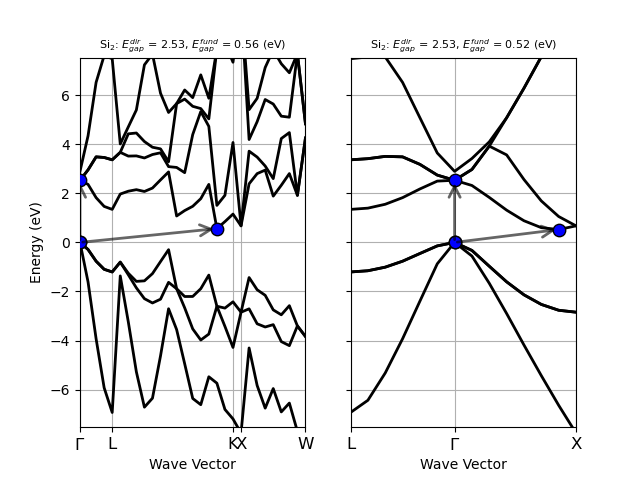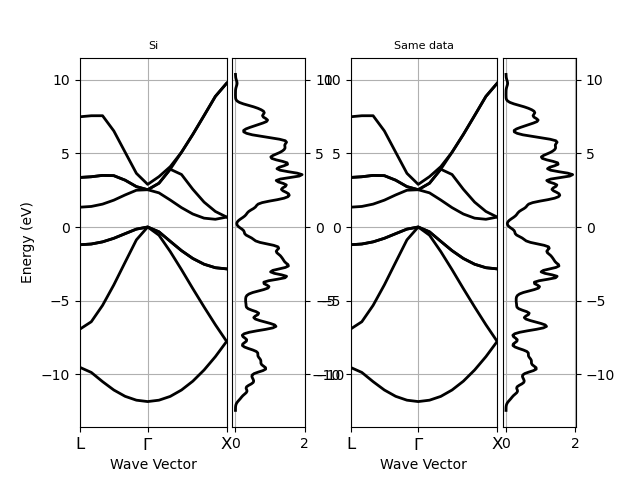Note
Go to the end to download the full example code.
ElectronBandsPlotter
This example shows how to plot several band structures on a grid.
We use two GSR files:
si_scf_GSR.n: energies on a homogeneous sampling of the BZ (can be used to compute DOS) si_nscf_GSR.nc: energies on a k-path in the BZ (used to plot the band dispersion)
from abipy.abilab import ElectronBandsPlotter
from abipy.data import ref_file
# To plot a grid with two band structures:
plotter = ElectronBandsPlotter()
plotter.add_ebands("BZ sampling", ref_file("si_scf_GSR.nc"))
plotter.add_ebands("k-path", ref_file("si_nscf_GSR.nc"))
# Get pandas dataframe
frame = plotter.get_ebands_frame()
print(frame)
nsppol ... dirgap_kend
BZ sampling 1 ... [+0.000, +0.000, +0.000]
k-path 1 ... $\Gamma$ [+0.000, +0.000, +0.000]
[2 rows x 31 columns]
To create a grid plot use:
plotter.gridplot(with_gaps=True)

Plotly version:
plotter.gridplotly(with_gaps=True)
To plot a grid with band structures + DOS, use the optional argument edos_objects The first subplot gets the band dispersion from eb_objects[0] and the DOS from edos_objects[0] edos_kwargs is an optional dictionary passed to get_dos to compute the DOS.
eb_objects = 2 * [ref_file("si_nscf_GSR.nc")]
edos_objects = 2 * [ref_file("si_scf_GSR.nc")]
plotter = ElectronBandsPlotter()
plotter.add_ebands("Si", ref_file("si_nscf_GSR.nc"), edos=ref_file("si_scf_GSR.nc"))
plotter.add_ebands("Same data", ref_file("si_nscf_GSR.nc"), edos=ref_file("si_scf_GSR.nc"))
# sphinx_gallery_thumbnail_number = 2
plotter.gridplot()

Plotly version:
plotter.gridplotly()
Total running time of the script: (0 minutes 1.599 seconds)